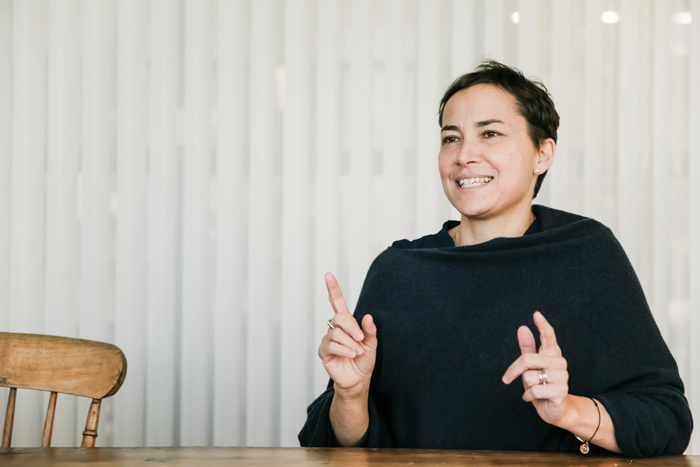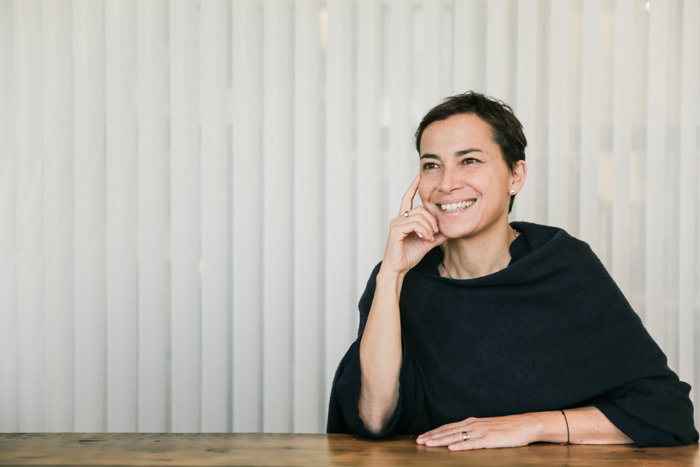This series introduces the "CIID Winter School," scheduled for February 2020, where participants can learn design methodologies and approaches.
This time, we interviewed Simona Maski, CEO and one of the founders of CIID (Copenhagen Institute of Interaction Design), the educational institution hosting the school. We asked about the goals behind establishing the school and the reasons for holding it in Japan.

Simona Maski, CIID
From "People Center" to "Life Center" Innovation
—Please tell us about your thoughts when you launched CIID and the school's vision.
First, CIID exists to create a better future for people and for the planet. Crucial to this is innovation that makes the planet sustainable. We aim to contribute to this purpose through three services: education, strategy, and incubation (business creation).
CIID was founded by six individuals from diverse countries including the US, India, Israel, the UK, and Italy. Naturally, as a startup, we had no budget initially. Fortunately, we secured investment from the Danish government in our early stages.
Initially, we focused on innovations that create positive impact for people. But after a few years, we realized that putting only "people" at the center was insufficient; we also needed to place "the Earth" equally at the center.
Innovation created solely for people harms the planet. Consider what we've created: industrial waste, climate change, air pollution. It's clear we must create things that are valuable for the planet too.
Moving forward, we must design innovation in close collaboration with data scientists and biologists, and work with environmental experts to realize a sustainable future.
Today, innovation is not just about creating new products or services, but about creating them in a sustainable way. That's why we initially called it "People Centered Innovation," but now we call it "Life Centered Innovation."
In fact, CIID is currently expanding its operations in Costa Rica. Costa Rica is a country leading the way in sustainable policies, meeting 100% of its energy needs with renewable sources. We are deeply inspired by this situation.

Why the Global Design School "CIID" Chose Japan
Why did you choose Japan as the location for the school?
First, Japan has always shown curiosity about CIID. Since our founding, we've worked and learned alongside many Japanese companies and individuals.
Second, we believed it would provide an interesting case study of how we could support a culturally advanced nation. CIID collaborates with the United Nations and structures all curriculum themes around the SDGs (Sustainable Development Goals). Among these are several critical challenges that design can help address, such as sustainable mobility. We are interested in exploring how a technologically advanced country like Japan can leverage its technology to support these efforts.
Japan is known as a leader in technology roadmaps, implementation, and research, achieving significant economic and fiscal success. Unfortunately, however, some of this growth has not been balanced with social development. In reality, Japan today faces various new challenges at the regional level.
We want to support Japan as a whole and consider how to design support for each society. However, our interest isn't solely because Japan has challenges. It's because this presents a wonderful opportunity to support Japanese companies through an approach centered more on the planet and life itself.
We chose Dentsu Inc. as a partner because they were interested in this form of support: aligning with the SDGs based on corporate strategy. We believe Japanese companies lack clarity on how to create value for society, achieve social growth, and continue financial success simultaneously.
Through our partnership with Dentsu Inc., I believe we can help accelerate Japanese companies' pace of SDG alignment by supporting new alliances, business models, and strategies tailored for them.
The circular economy also presents tremendous business opportunities
—While it's hard to say that the concepts of SDGs and the circular economy are deeply rooted in Japan, I hear these ideas are well-established in Denmark. What do you think is the reason for this?
The circular economy concept is deeply rooted not only in Denmark but across Scandinavia. The reason for its establishment is that incentives are built into policies and legal frameworks, with strong support from governments and public institutions.
Through infrastructure design that promotes actions like recycling and reusing existing resources, everyone—businesses, citizens, and policymakers—recognizes the need to create sustainable systems as business models.
Moreover, they recognize that the approach to building sustainable systems actually leads to the creation of new business opportunities. In Scandinavia, there are companies that generate profits and gain competitive advantages by embracing the circular economy. It's not just about doing good; it's also a fantastic business opportunity.
We don't yet know exactly what is needed to establish the circular economy mindset in Japan. However, we feel Japan too must drive transformation in its business practices.
Many alliances exist between industries driving Japan's economy, though most are currently formed to boost profits. Moving forward, we must cultivate a culture of forming partnerships and alliances specifically to pursue the circular economy and address the SDGs. I want to explore how we can achieve this.

—A message for those attending the "CIID Winter School":
Participants in this school will practically learn how to apply new skills at the intersection of digital technology, design, and innovation. This skillset can be effectively leveraged when companies formulate innovation strategies aligned with the SDGs.
Furthermore, this initiative will spark numerous networks (connect), prototypes (test), makings (create), and connections (link). We anticipate that CIID's platform will stimulate Japanese companies' SDGs strategies and alliances, and that this will be the first step in spreading CIID's approach in Japan over the long term.
CIID Winter School Information






